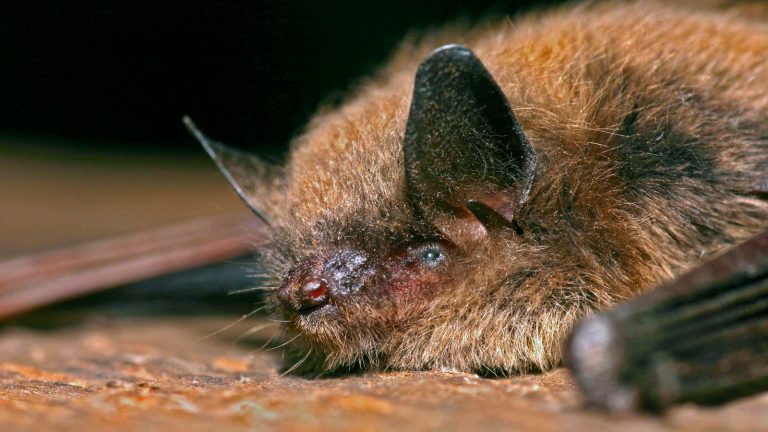Bat beauty contest participants include Myotis bats like this one.
Universal Images Group (Getty Images)
The beauty of bats is in the eye of the beholder.
Some people find Lord Flaps-A-Lot irresistibly cute, while others think Hoary Potter and Fire Guano beat Lord Flaps in terms of charm. Two bats faced off Thursday as the Bureau of Land Management began the first round of its bat beauty pageant. The contest consists of tallying public votes in bat brackets until one mammal wins the title. The online contest continues this week, with the winner scheduled to be crowned on Halloween.
The contest is part of Bat Week, an annual event hosted by conservation groups and government agencies across North America that celebrates the important role these often-maligned creatures play in maintaining healthy ecosystems around the world. It focuses on threats such as climate change, habitat loss and disease. and illegal hunting.
This year’s Bat Week runs from October 24th to October 31st, with social media posts revealing bat facts and dispelling myths about bats. For example, contrary to the popular adage of being “blind as a bat,” bats actually have good eyesight, and only a few species feed on blood. Bat Week also includes bat fundraisers and in-person educational events such as bat trivia nights, bat stories for kids, and bat-watching night walks.
Next is the Bat Beauty Contest, which the Bureau of Land Management has been running since 2019. The contest features contestants who have been found on public land and photographed by agency staff. There are over 1,400 species of bats. Those spooked by these flyers may reconsider their fears once they see Sir Flaps-A-Lot, Townsend’s long-eared bat from Utah. Sir Flaps-A-Lot and his ilk have ears that are about 1.5 inches long, which funnel sound into their ear canals. The large ears provide lift during flight and also help the animal regulate its body temperature.
Sir Flaps-A-Lot’s competition rivals Hoary Potter and Fire Guano from Oregon are, as their name suggests, Hoary Bats.
“This scruffy bat is known for its fast, straight flight, making it the perfect explorer for this year’s Quidditch team,” the Bureau of Land Management said on Facebook, allowing the public to appreciate the bat’s beauty. “Hoary bats do not need polyjuice potion to change their appearance, but instead curl their tails to disguise themselves as leaves and hide from predators.” Is there a talent section in the bat beauty contest? Maybe Hoary Potter will sweep that category. However, there is a possibility that you can win based on looks alone.
“What an adorable face,” Facebook user Lauren Goodridge said of Holly Potter’s shrunken face.
How bats benefit humans
Other bats vying for the coveted title so far include Robert Battinson, the myotis bat, and Bat Damon, the western bat. Bats like Bat Damon have erratic flight patterns to pollinate plants. Like many other bat species, the Myotis bat preys on insects, some of which carry pathogens and destroy agriculture.
“One bat can eat the equivalent of its own body weight in insects each night,” the Batweek website explains. “Eating all these insects helps protect food crops and forests from pests, saving farmers and forest managers billions of dollars each year.”
This is just one way bats benefit humans, but they are often seen solely as evil vectors of disease. A 2023 study found that mainstream media portrayals of bats as dangerous to human health are undermining efforts to protect them. Batweek wants to expand awareness of living things and show their beautiful side.


